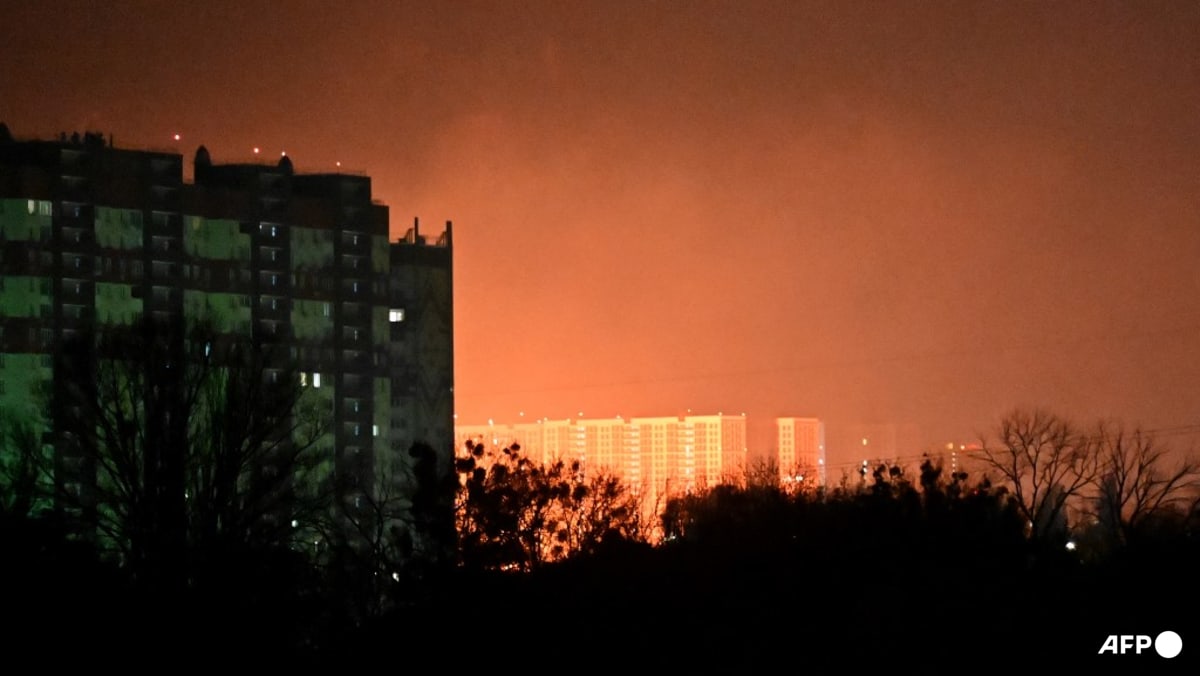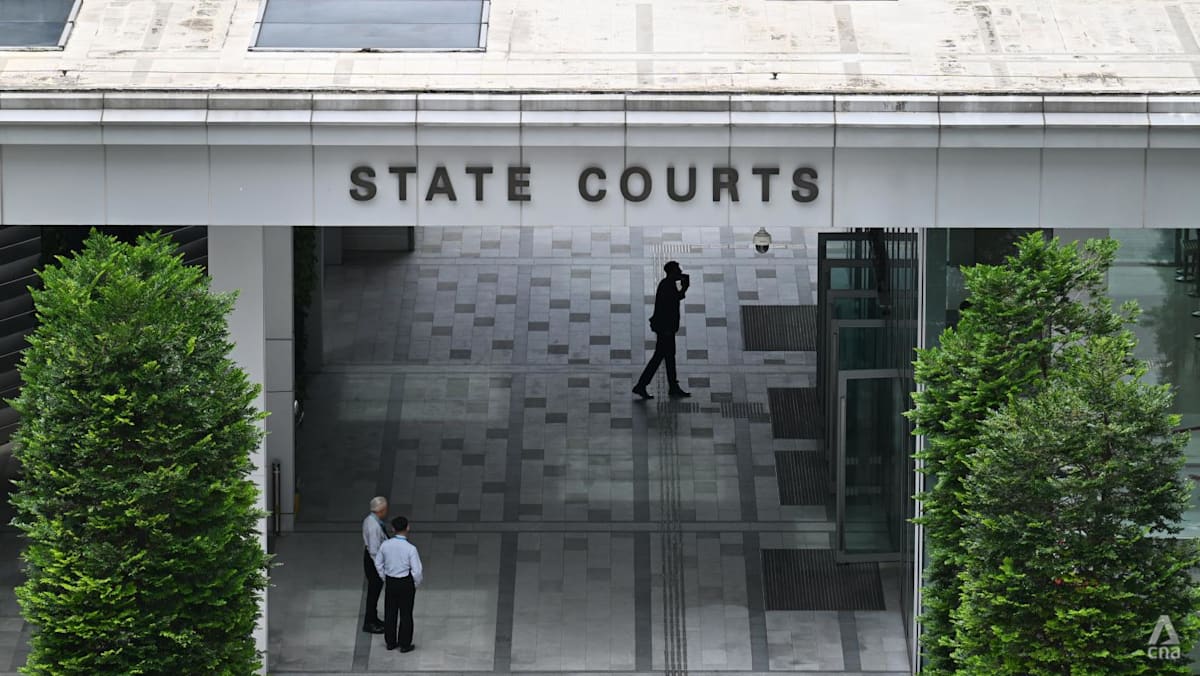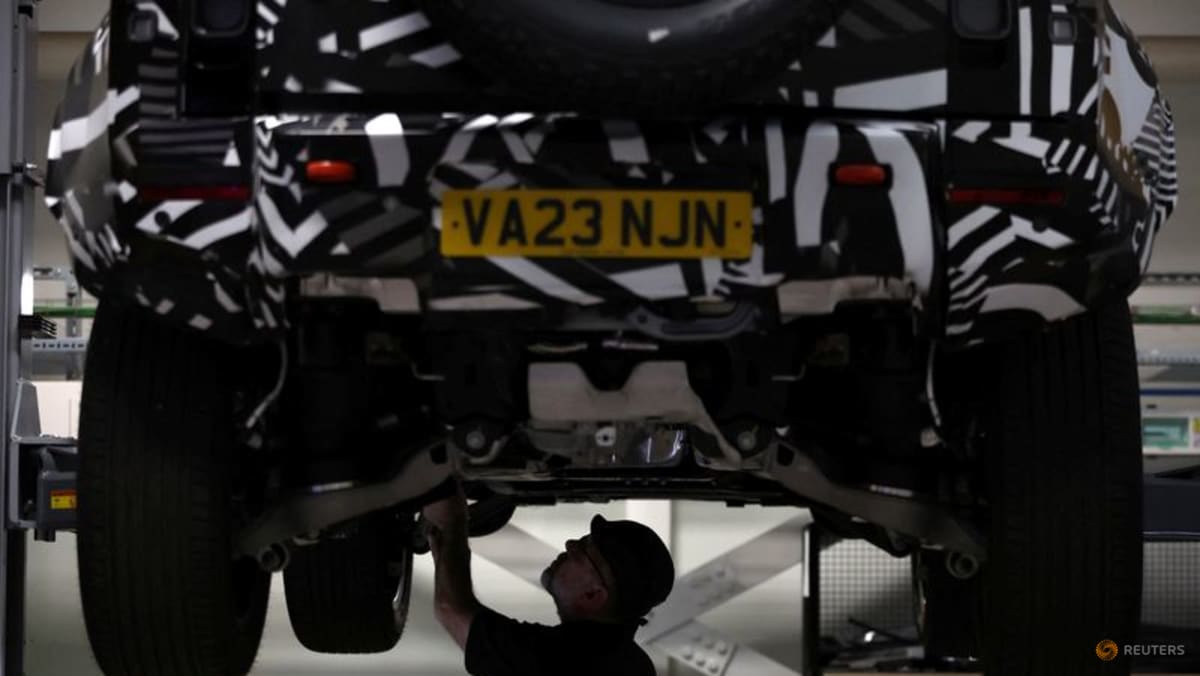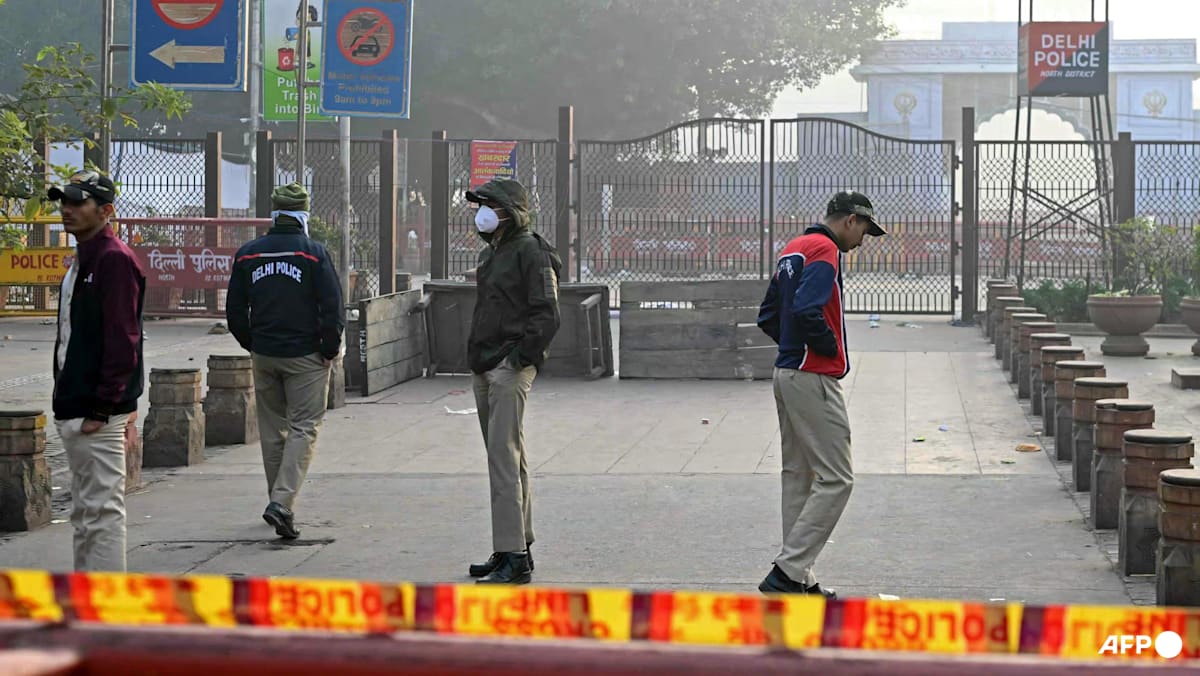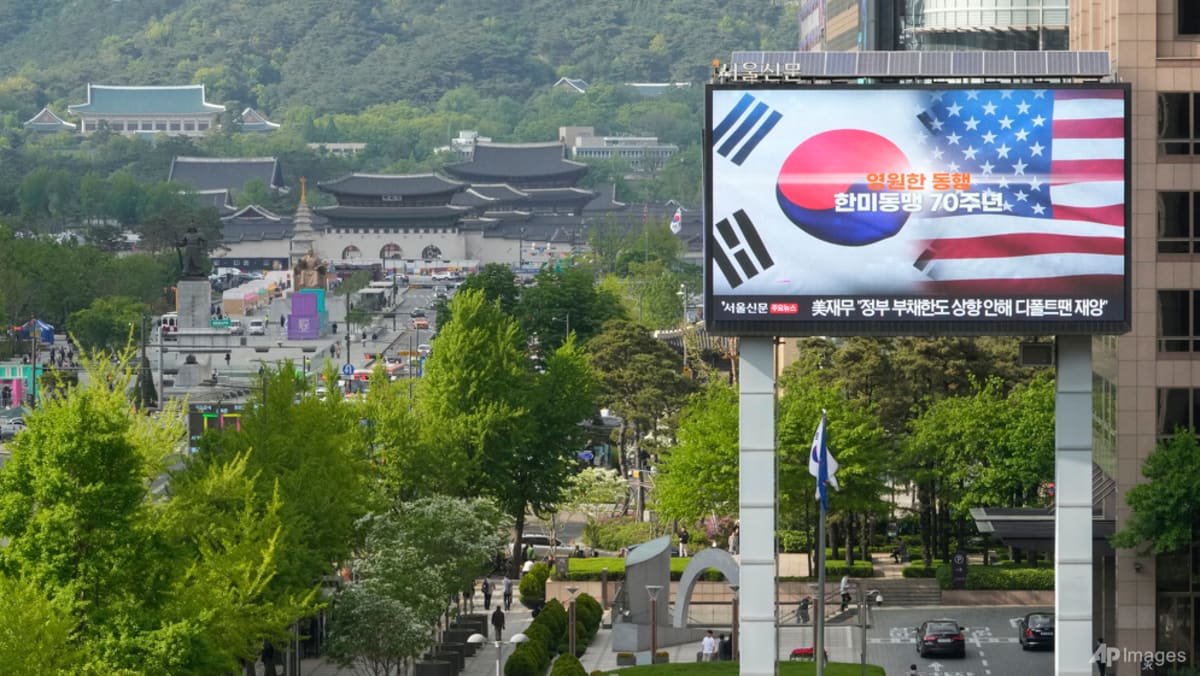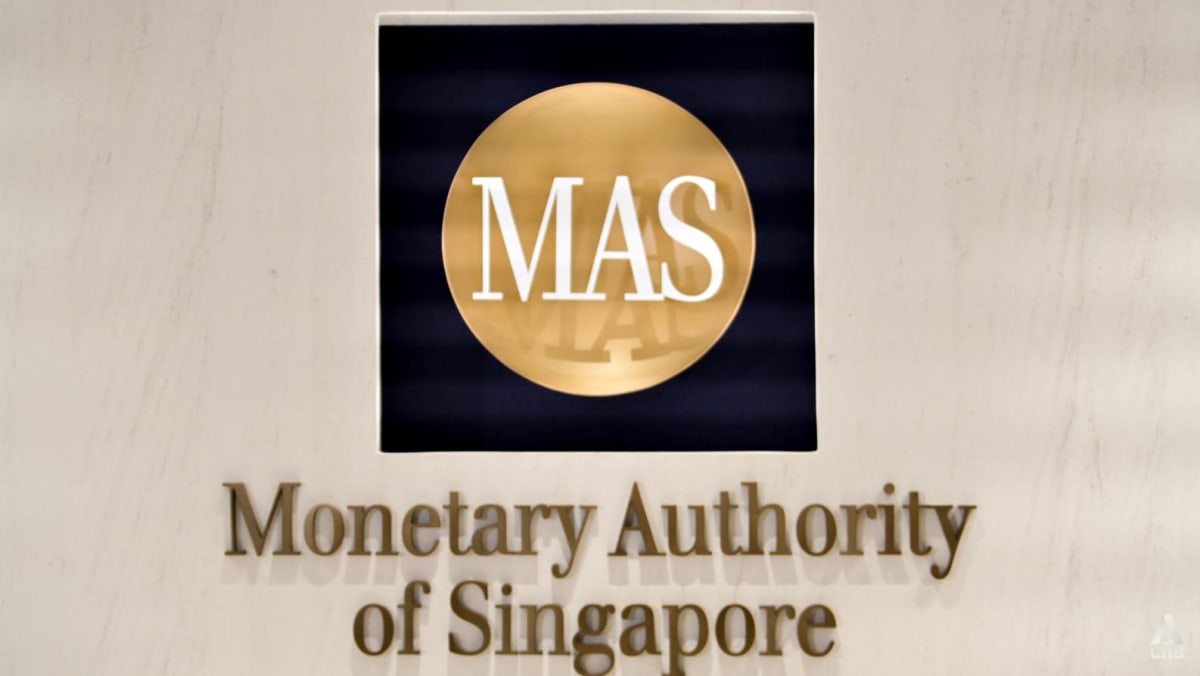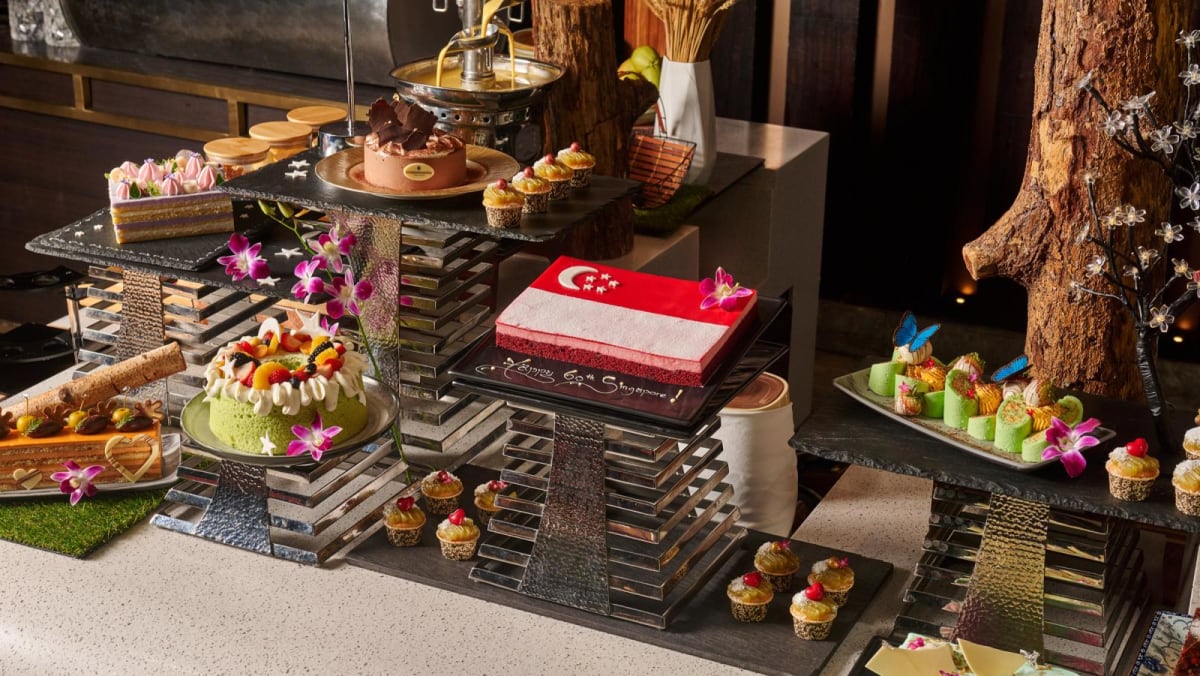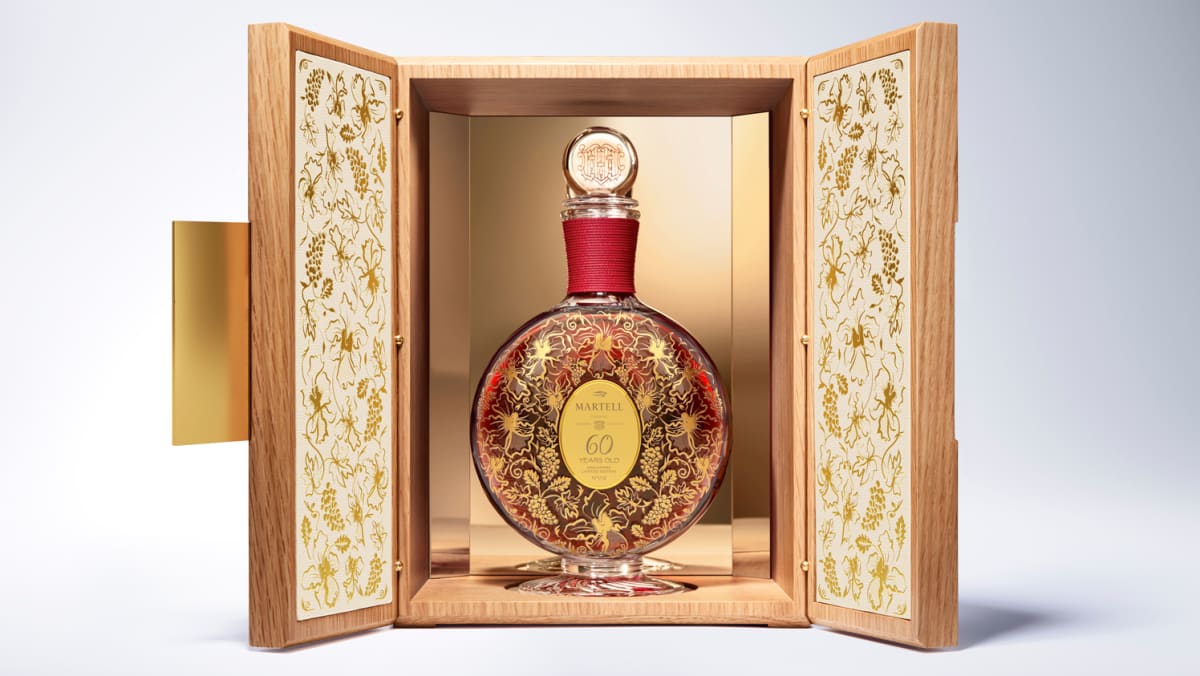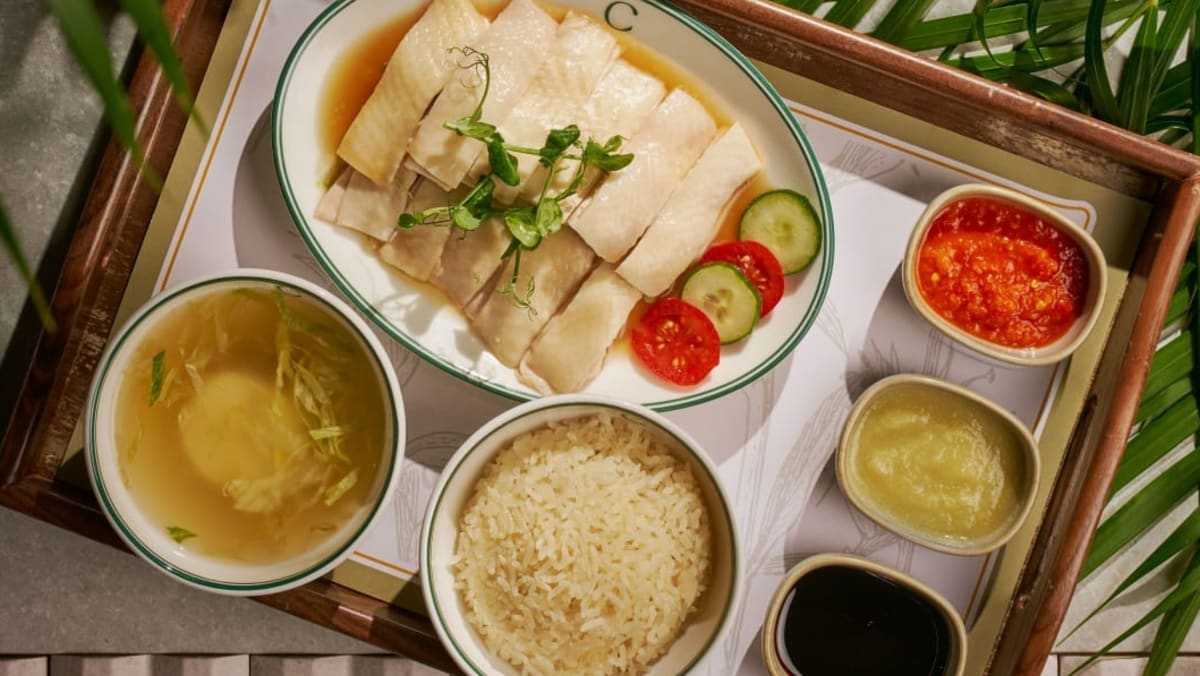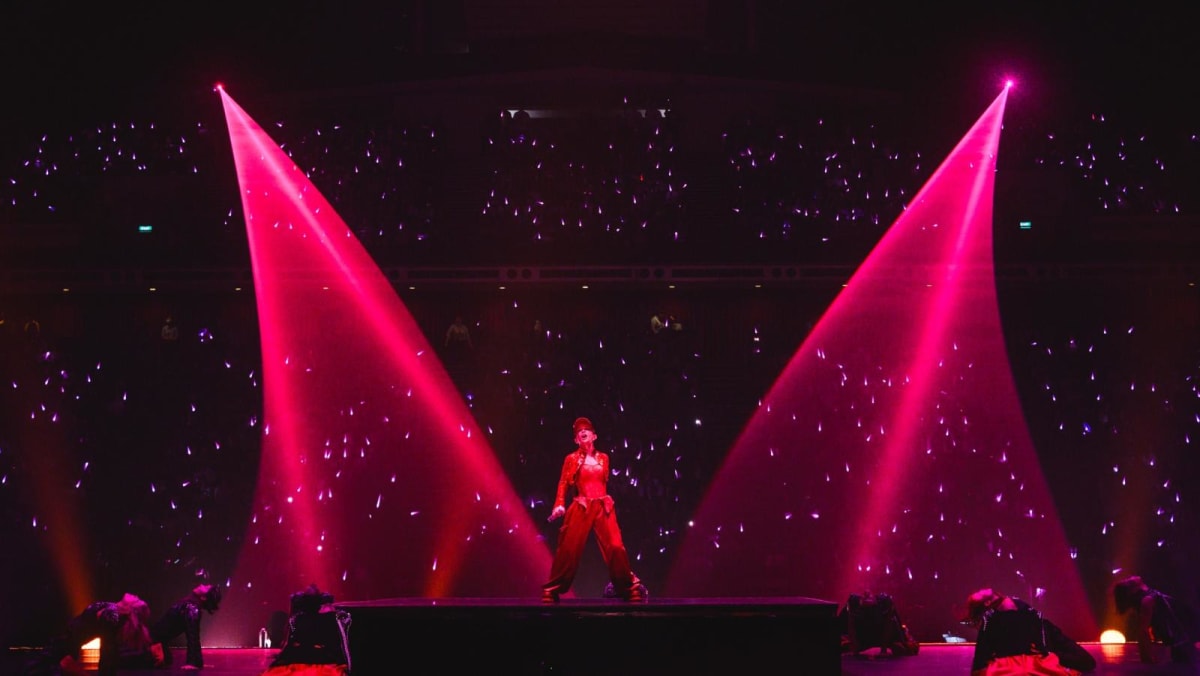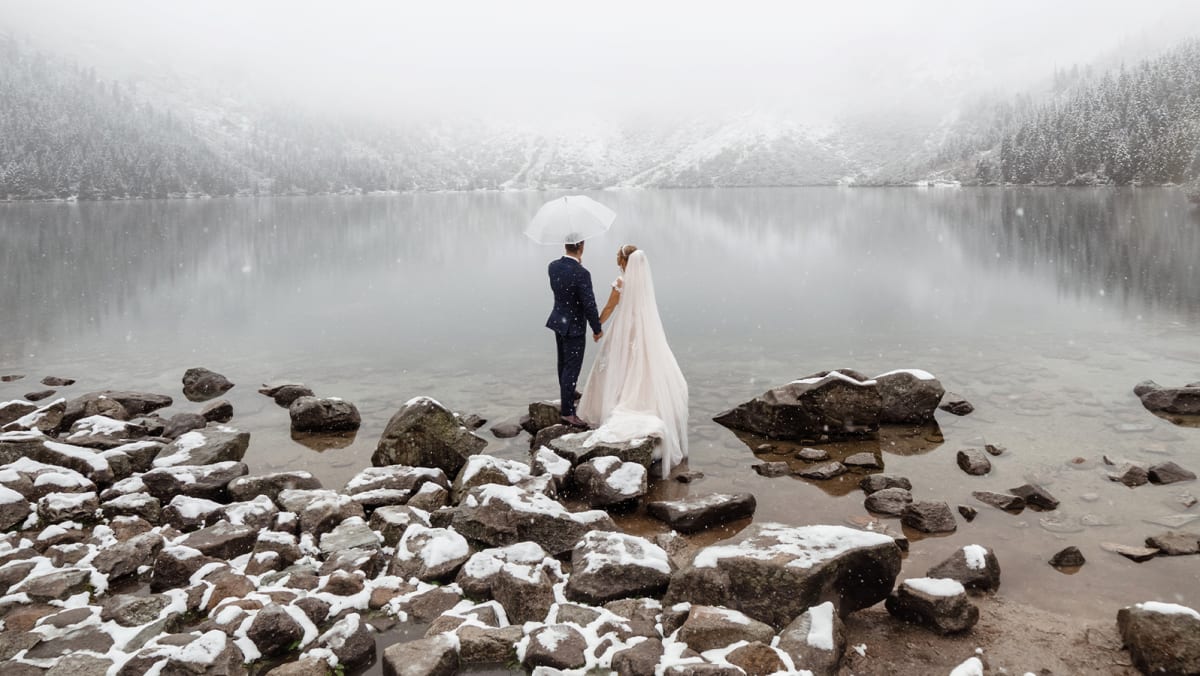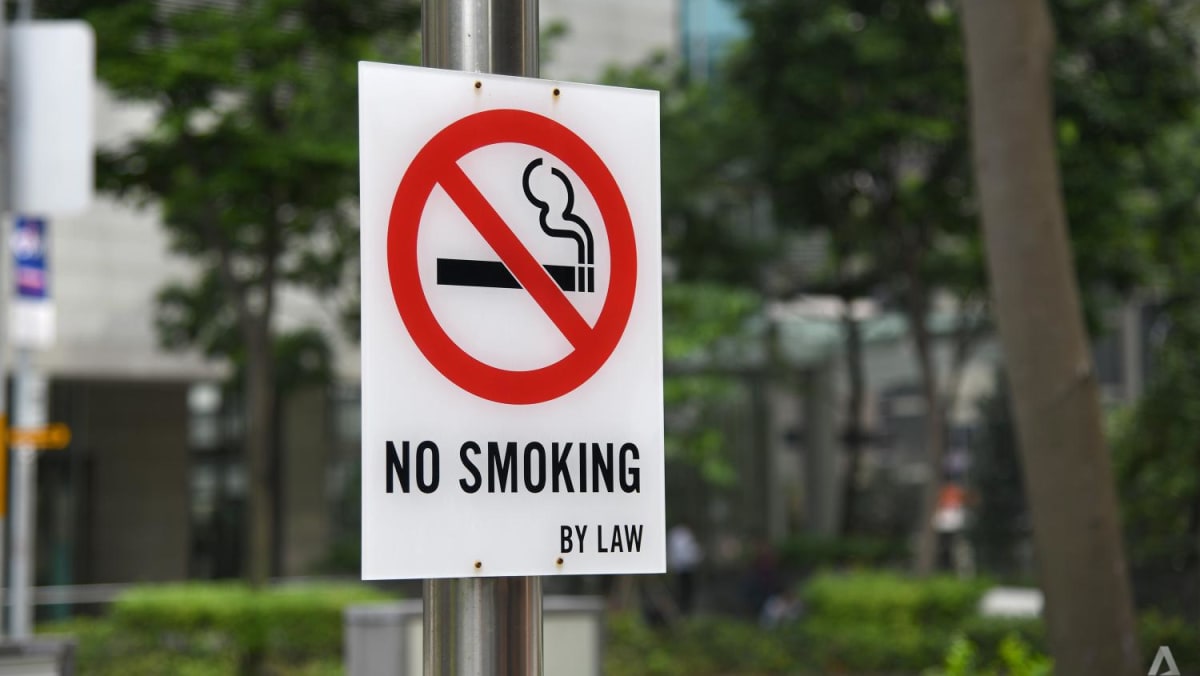Majorca, the Balearic island 125 miles off the Spanish mainland, has long attracted sunseekers to the romance of its jagged coastlines, azure waters and rolling farmlands. The island is shedding its reputation as a cheap party destination as visitors flock to its nature preserves, wellness retreats and acclaimed restaurants, many in or near the capital’s old town, where narrow streets still bear grooves left by horse-drawn carriages. Travellers seeking cultural heritage are rewarded, too, with highlights including an 18th-century glassblowing factory, diverse architecture and a house museum dedicated to the artist and former resident Joan Miro. Visit in the fall or spring for breathing room, with fewer tourists and cooler temperatures.
FRIDAY
2.30pm | Eat Majorcan cuisine, then sunbathe
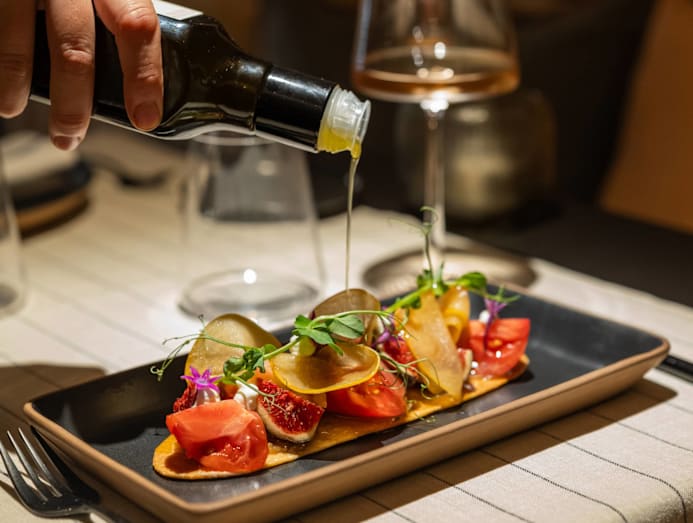 Ocre. (Photo: Emilio Parra Doiztua/The New York Times)
Ocre. (Photo: Emilio Parra Doiztua/The New York Times)
After landing at the Palma airport, head to the beach. There are plenty of pit stops for a Majorcan lunch along the way to the island’s eastern shores, an hour’s drive. Stop by the trendy restaurant Ocre, at the Hotel Can Ferrereta in the town of Santanyi (four-course set lunch, €31, or about US$36.50; S$46.50). Cala Llombards is a beach only a 10-minute drive from there, with free parking close to its calm waters. Walk a few minutes up the cliffs to its south to find a less-trafficked spot for sunbathing. Find other great beaches north of Llombards, too, including Cala d’Or and Cala Mondrago. Visitors who enjoy more of a hike might like Cala Varques, which offers a cliffside walk to its rocky arch, beneath which you’ll find divers and snorkelers exploring hidden coves.
4.30pm | Discover molten dreams
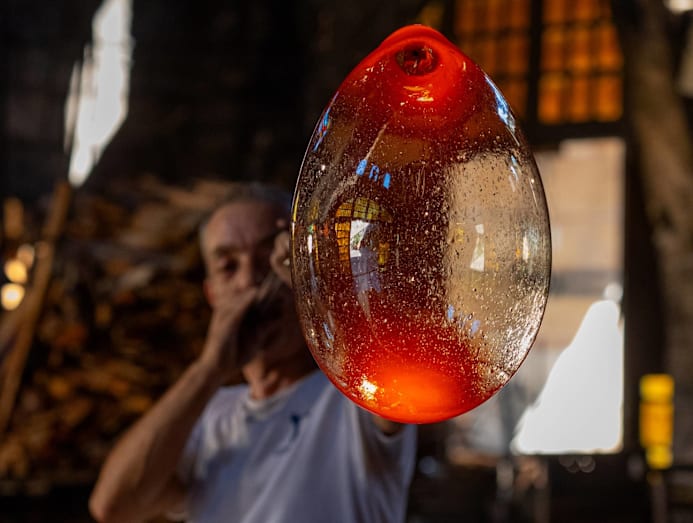 Gordiola. (Photo: Emilio Parra Doiztua/The New York Times)
Gordiola. (Photo: Emilio Parra Doiztua/The New York Times)
On the way back into Palma, stop at Gordiola, a glassblowing factory more than 300 years old. It includes a small museum featuring the factory’s quirky collection of glass vessels and figurines from across history (€8 for an adult ticket). Inspired by the Venetian techniques of glassblowing, the Gordiola family adopted a rougher approach to production reflecting the landscape and colours of Majorca that leaves the finished product with a unique, blistered texture.
6.30pm | Sip in the sunlight
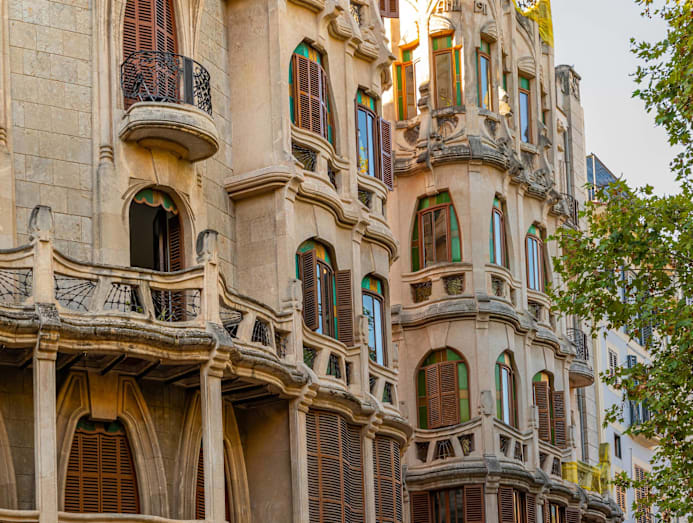 Edifici Casasayas. (Photo: Emilio Parra Doiztua/The New York Times)
Edifici Casasayas. (Photo: Emilio Parra Doiztua/The New York Times)
Start your evening sipping a Hugo Spritz (€9.50), made with hints of elderflower, mint and lime, at Gibson Bar at Placa del Mercat in Palma’s old town, one of the many bars that spill out onto the city’s historic plazas. From there, walk to landmarked Art Nouveau buildings like the Edifici Casasayas, examples of the romantic architectural style that were built in the early 1900s. This is also a great time to marvel at other examples of the city’s architecture, like the Catedral de Mallorca, a cathedral towering over the city skyline and the Llotja de Palma, a 15th-century Gothic guildhall that frequently hosts art exhibitions.
9pm | Enjoy Balearic bites
The neighbourhood of Santa Catalina, a short walk from the old town of Palma, hosts many of the city’s most interesting tapas bars (many recommend reserving ahead). Vandal Palma, takes an international approach to its menu, resulting in creative mixtures like a ceviche in a crisp, edible cone with coconut foam inspired by Thai and Peruvian flavours (€7). So does Stagier Bar, with creations like dumplings filled with lomo saltado, a Peruvian dish of sauteed beef that hints at the chef Joel Baeza’s Latin American roots. With wine pairings, expect to spend around €120 for two people.
 Santanyi is busy on Wednesdays and Saturdays, when its popular flea market takes over the city centre. (Photo: Emilio Parra Doiztua/The New York Times)
Santanyi is busy on Wednesdays and Saturdays, when its popular flea market takes over the city centre. (Photo: Emilio Parra Doiztua/The New York Times)
WHERE TO STAY
- Hotel Corazon is a luxury hotel with a boho-chic aesthetic and penchant for playing alternative rock. The restaurant overlooking the town of Soller is popular with locals, as is its small gift shop. The hotel contains 15 rooms and a pool exclusively for guests that overlooks the ocean. Rooms start at €900, or about US$1,046, for two nights.
- Palma Riad is a hotel that takes design cues from the city’s Moorish influences. The building holds just 11 suites and has a stylish bar on its ground floor. Rooms start at €380.
- Antigua Palma, a hotel with a Baroque courtyard and a rooftop porch, is central and just a few blocks away from the Palma de Mallorca Town Hall. Rooms start at €180 per night.
- Short-term rentals in central Palma are tightly restricted by law, and Airbnbs are sparse outside the city. There are some good finds, however, typically they cost more than €300 per night.
Collapse Expand
SATURDAY
9am | Caffeinate under the clock
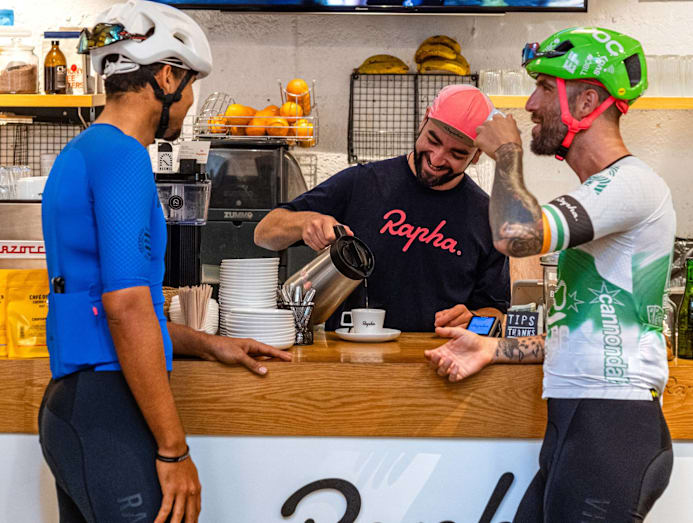 Rapha Mallorca. (Photo: Emilio Parra Doiztua/The New York Times)
Rapha Mallorca. (Photo: Emilio Parra Doiztua/The New York Times)
Mornings in Palma are graciously slow, as residents start their days with an espresso (€2) at their local cafes, like Cafe Ca’n Salat in the old town. Stroll by Palma de Mallorca Town Hall, where a clock hangs above the building’s Baroque facade. Across from the town hall is an olive tree, which some locals estimate to be around 600 to 800 years old. Take a short walk to Placa del Rosari, a meeting spot for Majorca’s international cycling community. Most of the stores surrounding this block are hybrids, selling biking equipment and coffee. Rapha Mallorca makes an excellent flat white (€3.20), serves pastries, and offers free bicycle riding groups.
10.30am | Explore a sumptuous garden estate
After breakfast, drive north from Palma about 25 minutes to the Serra de Tramuntana, a rugged mountain range (and UNESCO World Heritage Site) that covers the island’s northwest coast. Visit Jardines d’Alfabia (adult admission, €9) an estate established in the 12th century by a Moorish family and which later adopted architectural elements from the Gothic, Renaissance and Baroque periods — making it a great introduction to the surrounding region’s rich history. Queen Isabella II of Spain is said to have stayed at the estate’s house in 1860, according to her chronicler Antonio Flores, who called it so “sumptuous” that “one never knows where the garden ends and the mountain begins.” Beyond the gardens is a small cafe and an area to visit farm animals like chickens and goats.
1pm | Have lunch on the edge
 Hotel Corazon. (Photo: Emilio Parra Doiztua/The New York Times)
Hotel Corazon. (Photo: Emilio Parra Doiztua/The New York Times)
Your next destination is high atop a mountain to the north, but take a detour first into the adjacent port town of Soller, known for its pottery and handmade textiles. Look for the romantic wooden train that has run between Soller and Palma since the 1910s. Winding roads eventually lead to Hotel Corazon, a former finca — a country estate — growing produce on its cantilevered farmland that has been transformed by two expat artists into a boho chic retreat. Eat lunch, which comes in large portions and uses vegetables harvested on the property, on the hotel restaurant’s terrace, which has an astonishing view. Say “hola” to the friendly cats sunning on the outdoor couches. Lunch for two, without drinks, about €55.
3pm | Descend through the hills
A breathtaking drive awaits you on the zigzagging streets that connect Soller with the smaller, picturesque villages of the valleys, eventually passing through the town of Deia, where the poet Robert Graves once lived. (His home is now a museum, €10.) Continue down the road toward Valldemossa, stopping in the town for a late-afternoon treat named coca de patata, a soft bun made with potato flour, from Ca’n Molinas. Heading east through the valleys, you will emerge back onto the fertile plains of Majorca, where several old wineries have opened up their fincas. Vineyards like Bodega Ribas provide tours and tasting menus with a reservation (from €31 per person).
7pm | Cheers, al fresco
 Barbar. (Photo: Emilio Parra Doiztua/The New York Times)
Barbar. (Photo: Emilio Parra Doiztua/The New York Times)
After returning to Palma, walk alongside the yacht-filled marina and Torrent de Sa Reira, a park, to reach Es Baluard Museu d’Art Contemporani de Palma (€6). The museum mixes local talents like Joaquim Mir and Santiago Rusinol with globally recognised artists like Pablo Picasso, Robert Motherwell and Marina Abramovic. It also hosts live music and other events in its courtyard, and its restaurant and bar have a spectacular view of the marina and the Castell de Bellver, a hillside castle. From there, head to Barbar, an intimate tapas restaurant that specializes in slow-cooked and cured meats. Try the Iberian acorn-fed ham (€18), the steak tartare (€23) and the raw tuna with roasted strawberries (€24) to start. Reserve ahead. For a nightcap, have a Negroni (€15) at the moody bar attached to the nearby Palma Riad hotel.
 Port de Soller wraps around a bay and has dozens of beachside restaurants. (Photo: Emilio Parra Doiztua/The New York Times)
Port de Soller wraps around a bay and has dozens of beachside restaurants. (Photo: Emilio Parra Doiztua/The New York Times)
SUNDAY
9am | Wake up with coffee in a windmill
 Santal. (Photo: Emilio Parra Doiztua/The New York Times)
Santal. (Photo: Emilio Parra Doiztua/The New York Times)
In Palma, discover the remains of Els Molins, a series of 17th-century windmills that serve as artifacts of a time when Majorca was known for its grain-milling industry. Now the interiors of these windmills serve as trendy restaurants, including Santal, a brunch spot serving healthy foods and strong coffee (smoothies, €7, and avocado toast, €8.50). For a more glamorous view, try the deck outside Cappuccino Palau March, a cafe across the street from the Palau Reial de l’Almudaina, a historic palace of the Spanish royal family (admission, €7).
10.30am | Immerse in Miro
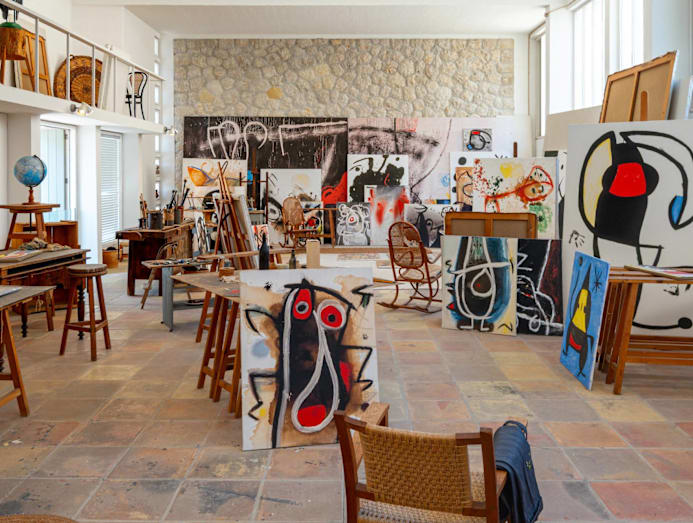 undacio Miro Mallorca. (Photo: Emilio Parra Doiztua/The New York Times)
undacio Miro Mallorca. (Photo: Emilio Parra Doiztua/The New York Times)
Finding one last meditation on the beauty of Majorca, head to Palma’s western outskirts by car to visit the Fundacio Miro Mallorca, a museum on the property where the 20th-century Spanish painter Joan Miró lived and worked during the final years of his life. The studio was designed by the architect Josep Lluís Sert, and the property includes the 18th-century villa up the hill, where Miro left behind charcoal graffiti on the walls and several of his artworks. Sculptures and large-scale paintings typically fill the museum’s exhibition halls, as well. Admission, €10.
By Zachary Small © The New York Times.
This article originally appeared in The New York Times
Source: New York Times/bt







